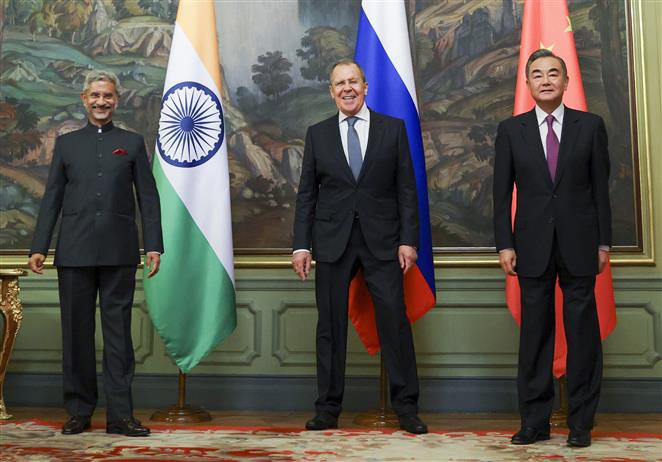India, China agree on 5 point plan to ease LAC tensions
Date:- 11 Sep 2020

Ties at a crossroads, India should pull back, says Wang; border tension and bilateral ties linked, says Jaishankar
India and China agreed on a five-point approach that entails further talks to end tensions on the Line of Actual Control (LAC) following talks between their Foreign Ministers that saw both of them touch on the linkages between bilateral ties and the border problem.
Sources here said the meeting saw the Indian side seeking disengagement in all the friction areas with the military commanders to work out the phasing of final deployment to permanent posts. The Chinese side was also told that its large amassing of troops had created several flash points along the LAC.
A joint statement at the end of the two-and-a-half-hour discussion in Moscow between Foreign Ministers S Jaishankar and Wang Yi saw concurrence on the path to resolving the tensions but their narratives diverged on whether the border issue is linked to the overall trajectory of bilateral relations.
The Chinese embassy e-mailed a version of the meeting that quoted Wang as saying that India-China ties were once again at a “crossroads”. Wang outlined China’s “stern” position on the situation at the border and called on the Indian side to “move back all men and equipment that have trespassed”. The Chinese side said it was willing to hold “enhanced dialogue” at the field commander level to facilitate the process.
It quoted Jaishankar as saying that India “does not consider the development of bilateral relations as dependent on the boundary question and India does not want to go backwards”.
Sources here did not contest this Chinese assertion about Jaishankar. But they contradicted the Chinese quote about Jaishankar indirectly by saying that the recent incidents in eastern Ladakh “have” impacted the development of bilateral relationship. Sources underlined that while India recognised that a final solution would take time, peace on the border was essential for further developing bilateral ties in other spheres.
While agreeing on a five-point agenda to improve the current situation on the LAC which “is not in the interest of either side”, Jaishankar and Wang said both sides would continue dialogue at three levels - through the Special Representative mechanism, Working Mechanism for Consultation and Coordination and field commanders level.
The ministers agreed that as the situation eases, the two sides should expedite work to conclude new Confidence Building Measures to maintain and enhance peace and tranquillity in the border areas.
The interaction held on the sidelines of the Shanghai Cooperation Organisation (SCO) meeting agreed not to allow differences to become disputes by following all the existing agreements and protocol on China-India boundary affairs, maintain peace and tranquillity in the border areas and avoid any action that could escalate matters.
Jaishankar’s interaction follows another one held last week between Defence Minister Rajnath Singh and his Chinese counterpart, also in Moscow, where both ministers set out their respective positions on restoring normalcy on the LAC.
Earlier on Thursday, Jaishankar and Wang participated in two multilateral interactions in which bilateral disputes were not discussed. The main show for which Jaishankar had gone to Moscow—the meeting of the Council of Foreign Ministers of the Shanghai Cooperation Organisation—was held in the morning.
The Foreign Ministers held in-person talks after three rounds of virtual meetings of the working mechanism on the border and several army commander-level meetings failed to stem a series of aggressive actions that culminated in shots being fired at the LAC for the first time in 45 years.
Courtesy : Daily Tribune: 11thSeptember, 2020


